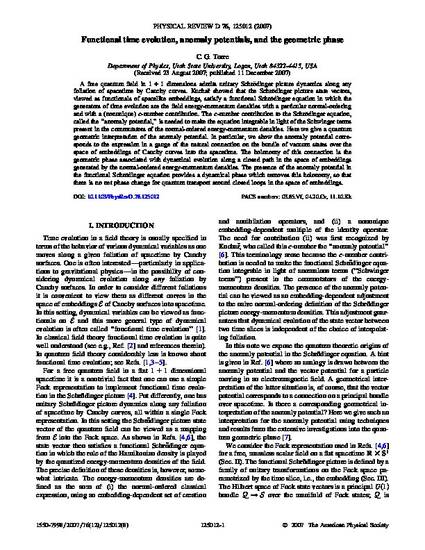
A free quantum field in 1+1 dimensions admits unitary Schrödinger picture dynamics along any foliation of spacetime by Cauchy curves. Kuchař showed that the Schrödinger picture state vectors, viewed as functionals of spacelike embeddings, satisfy a functional Schrödinger equation in which the generators of time evolution are the field energy-momentum densities with a particular normal-ordering and with a (nonunique) c-number contribution. The c-number contribution to the Schrödinger equation, called the “anomaly potential,” is needed to make the equation integrable in light of the Schwinger terms present in the commutators of the normal-ordered energy-momentum densities. Here we give a quantum geometric interpretation of the anomaly potential. In particular, we show the anomaly potential corresponds to the expression in a gauge of the natural connection on the bundle of vacuum states over the space of embeddings of Cauchy curves into the spacetime. The holonomy of this connection is the geometric phase associated with dynamical evolution along a closed path in the space of embeddings generated by the normal-ordered energy-momentum densities. The presence of the anomaly potential in the functional Schrödinger equation provides a dynamical phase which removes this holonomy, so that there is no net phase change for quantum transport around closed loops in the space of embeddings.
